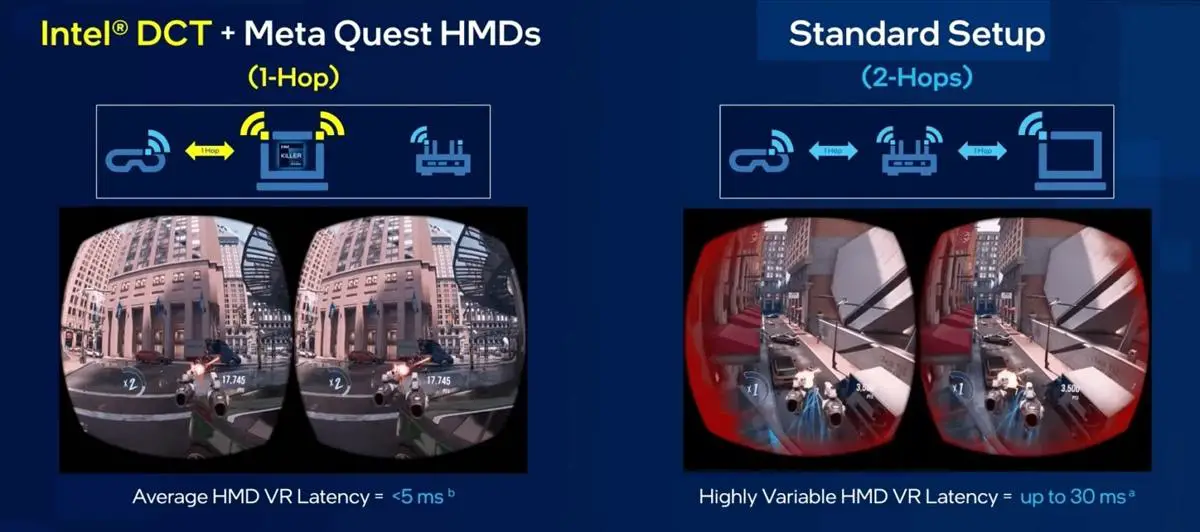At present, the vast majority of all-in-one VR users will use wireless streaming to connect to the PC to play PC VR games. Although the feeling of getting rid of the cable is indeed very free, with it comes the problem of delay. If the router and the VR headset are not in the same room, it is basically impossible to play normally.
For this situation, most players will add another router in the game room, but in this way, the data will always go to the router first and then to the VR headset, so there is still some delay. According to
UploadVR, Intel and Meta cooperated to provide a low-latency wireless streaming solution based on the AX1690 wireless network card for the Quest series.

The name of this technology is DCT (Double Connect Technology). With this technology, the network card can establish two connections at the same time, one is the network connection between the PC and the router, and the other is the direct connection between the VR headset and the PC. In this way, the data does not need to go through the router, but directly reaches the VR headset. It looks like it’s connecting to WiFi while opening a dedicated hotspot for the VR headset. Intel said that with this technology, the latency of VR headsets can be reduced to less than 5ms compared to 30ms for common connections.

At present, this technology is only available for the AX1690 WiFI 6E network card, and the supported devices are
Quest 2 and Quest Pro, both of which support WiFi 6 connections. It is not yet clear whether this feature will appear on more Intel network cards, or adapt to more VR all-in-one machines. After all, Pico 4 also supports WiFi 6.







